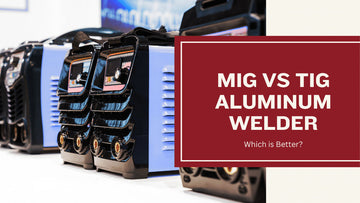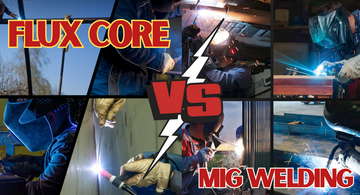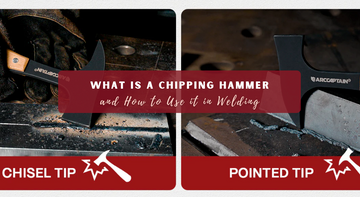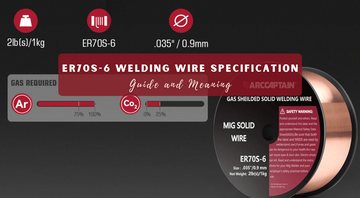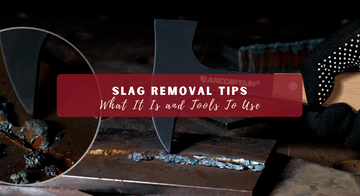When it comes to joining aluminum, the choice often comes down to a MIG vs TIG aluminum welder. Both methods are highly effective but have key differences.
MIG welding is like using a hot glue gun but for metal. A wire is continuously fed through a gun, melting into the joint to fuse the metals. It's quick and efficient, making it great for bigger or longer welding jobs. TIG welding, on the other hand, is more like detailed painting. It uses a non-consumable tungsten electrode to create the weld. You add a separate filler material, giving you more control for intricate or delicate welds.
In the debate of MIG vs TIG Aluminum Welder, it's all about finding the right tool for the job. Aluminum is a tricky metal to work with – it's lightweight and cools quickly, so the welding method makes a big difference. MIG is often preferred for its speed, especially on thicker pieces, while TIG is chosen for its precision on thinner or more complex designs.
MIG vs TIG Aluminum Welder: What is MIG Welding?
MIG welding is often used for larger aluminum projects like building structures or industrial repairs. Since aluminum is a soft metal, MIG welding with aluminum requires specific wires and usually a spool gun or a push-pull gun to prevent wire tangling.
Benefits of MIG Welding Aluminum
Because of its rapid and effective welding technique, MIG welding aluminum is particularly well-suited for bigger tasks using thicker materials. Additionally, it's not too difficult to learn and operate, making it a user-friendly choice both beginners and experienced welders. Here are some benefits of welding aluminum using a MIG welder:
Speed and Efficiency
One of the biggest pluses of using MIG for aluminum is how quickly you can get the job done. It’s much faster than TIG welding, making it great for bigger projects.
Ease of Use
MIG welding is also pretty user-friendly, even for beginners. With the right setup, it’s easier to learn and use compared to some other welding methods.
Aluminum MIG Welding's Drawbacks
Because MIG welding aluminum requires specific equipment, such as a spool gun, which can increase costs, it might be limited. Furthermore, in comparison to TIG welding, it provides less control and accuracy, which might be a disadvantage for jobs requiring exquisite craftsmanship or complex detail.
Here are some drawbacks using a MIG welder:
-
Equipment Needs
MIG welding aluminum requires special equipment like a spool gun. This can be an extra expense and might not be ideal for occasional welders.
-
Less Precision
While MIG is great for speed, it doesn’t always have the precision of TIG welding. For really detailed or delicate aluminum work, MIG might not be the best choice.
In summary, MIG welding is a strong contender for many aluminum welding tasks, particularly where speed and efficiency are key. However, it’s important to consider the nature of your project and whether the benefits of MIG welding align with your needs.
What is TIG Welding?
TIG welding, or Tungsten Inert Gas welding, uses a tungsten electrode to heat the metal, while a separate filler rod is fed in by hand. This method is known for its precision and control, making it especially suitable for welding aluminum. Aluminum is a soft metal that requires a delicate touch, and TIG welding's accurate heat control and slower pace make it perfect for this.
TIG Welding with Aluminum
TIG is often the go-to choice for aluminum projects that need a clean, high-quality finish. It's great for thinner aluminum or when you need to do detailed work on aluminum pieces.
The Shielding Gas
When welding aluminum with TIG, using a 100% argon shielding gas is essential. An argon/helium mixture can also be used to improve penetration, particularly when welding thick aluminum pieces.
Why is AC Current Necessary?
To successfully TIG weld aluminum, alternating current (AC) is necessary. AC current alternates between direct current electrode positive (DCEP) and direct current electrode negative (DCEN), providing a cleaning action that breaks up aluminum oxides and allows deeply penetrating power into the base aluminum metal.
Pulse TIG
Pulse TIG is a helpful technique when welding aluminum, as it allows for precise control over heat input and prevents burn-through on thin aluminum sheet metal. It enables the specification of low and high welding amperage, as well as pulse frequency, offering a professional level of control over sensitive aluminum metal.
Foot Pedal Control
Using a foot pedal to control amperage is a significant advantage of TIG welding. It provides real-time control over heat input, allowing welders to adjust the amperage input as needed and avoid excessive heat build-up during the welding process. This level of control is particularly beneficial when working with aluminum due to its rapid heat conductivity.
Advantages of TIG Welding Aluminum
TIG welding aluminum offers unparalleled precision and control, making it ideal for intricate and detailed work on thinner aluminum pieces. This method produces clean, high-quality welds with a visually appealing finish, essential for projects where the appearance of the weld is important.
Advantages of TIG welding aluminum are:
- Precision and Quality: One of the biggest advantages of using TIG for aluminum is the level of precision it offers. You can get really detailed and make sure the weld is just right.
- Clean and Attractive Welds: TIG welding gives you smooth and visually appealing welds, which is often important for aluminum projects where the appearance of the weld matters.
Challenges of TIG Welding Aluminum
Because TIG welding aluminum involves precision hand control and requires a higher skill level, it requires more practice. It also takes longer than other welding techniques, which makes it less effective for larger or thicker aluminum structures.
Challenges of welding aluminum using TIG welder are:
- Requires More Skill: TIG welding is generally considered more challenging to learn and master, especially when working with aluminum. It demands steady hands and a good deal of practice.
- Slower Process: TIG welding is a slower process compared to MIG. For large-scale or thick aluminum projects, it might not be the most time-efficient method.
In conclusion, TIG welding produces precise and excellent welds, making it a very effective method for welding aluminum. For projects where attention to detail and quality of finish are crucial, the benefits can frequently outweigh the difficulties it poses, such as a longer learning curve and slower workflow.
Differences Between MIG and TIG Welder for Aluminum
MIG welding is faster and easier to learn, making it suitable for larger, thicker aluminum projects, while TIG welding offers superior precision and quality, ideal for detailed work on thinner aluminum.
Welding aluminum can be challenging, but ArcCaptain has two options to help you get the job done: the ArcCaptain Multi-Process MIG200 and the ARCCAPTAIN TIG200P AC DC Multi Process Pulse TIG Aluminum Welder.
Here's a side-by-side comparison of the two processes:
|
Process |
Advantages |
Disadvantages |
|
MIG Welding |
Faster than TIG welding |
Can produce a lower weld quality |
|
Suitable for thicker aluminum materials |
Consumable electrodes need to be replaced regularly |
|
|
Works well in aerospace applications |
Can produce more sparks and smoke |
|
|
TIG Welding |
Can produce a higher weld quality |
Slower than MIG welding |
|
Non-consumable electrodes don't need to be replaced |
More difficult for beginners to learn |
|
|
Works well for thinner aluminum materials |
More expensive than MIG welding |
|
|
Provides better control over the welding torch |
Requires a high-quality power source |
Ultimately, the choice between MIG and TIG welder comes down to your specific needs and preferences. Consider the advantages and disadvantages of each process and choose the one that best suits your project.
Setting Up The ArcCaptain Multi-Process MIG200 to Weld Aluminum

The suitable parameters for ARCCAPTAIN MIG 200 depend on several factors such as the type of material you will weld, the thickness of the material, the welding position, and the wire size being used.
Here are some general guidelines to help you get started with setting up suitable parameters for ARCCAPTAIN MIG 200:
-
Determine the type and thickness of the material you will weld.
-
Select the appropriate wire size and drive roller type based on the thickness of the material.
-
Choose the appropriate shielding gas for the material being welded.
-
Set the voltage and wire feed speed based on the wire size and material thickness.
-
Test your settings on a scrap piece of material before welding on the actual workpiece.
-
Adjust the settings as necessary based on the welding position, joint type, and other variables.
It's important to note that the best parameters for ARCCAPTAIN MIG200 may vary based on the specific application and welding conditions.
Therefore, always follow the recommendations and adjust the settings based on your own experience and testing. For more set up guide read: How to Setup Suitable Parameter for ARCCAPTAIN MIG200.
The Three Problems Of Aluminum Welding
When welding aluminum, the three main issues you'll encounter are the material's high heat conductivity, surface-deposited aluminum oxide, and susceptibility to contamination. Let's talk about each and explain why it is a problem:
1. Aluminum Oxide
Aluminum has a strong affinity for oxygen, causing it to form an oxide layer on its surface when exposed to air. This layer has a much higher melting point than the base aluminum, making it crucial to remove before welding. Cleaning the surface thoroughly and using appropriate tools for oxide removal is essential to ensure successful welding.
Safety Tips
- Wearing PPE: Always wear the right safety gear like gloves and masks while you’re cleaning and preparing aluminum.
- Why Safety Gear: This is to protect you from any harmful particles and to prevent accidents during the welding preparation process.
In short, when working with aluminum, it’s crucial to deal with the oxide layer that forms on its surface. Removing this layer properly and safely ensures that your welding is successful and strong. Don’t forget to wear your protective equipment to stay safe while you work!
2. Excessive Heat Conductivity
Another issue with welding aluminum is its excessive heat conductivity. Due to this property, the metal rapidly conducts heat away, requiring a higher amperage input than mild steel. As a result, it is essential to manage heat input and work on the piece from multiple sides to prevent heat-related issues. Rapid heat conductivity also demands swift movement during the welding process to avoid melting through the metal and causing damage.
3. Contamination
Contamination is a critical concern when welding aluminum. It is essential to maintain absolute cleanliness and prevent cross-contamination, especially with mild-steel dust particles. Using aluminum-specific tools and ensuring a separate work area for aluminum welding can help prevent contamination and airborne metal particles from impairing joint quality.
Conclusion: MIG vs TIG Aluminum Welder
Frequently Asked Questions: MIG vs TIG Aluminum Welder
Is it better to MIG or TIG weld aluminum?
Whether it's better to MIG or TIG weld aluminum depends on the specific requirements of your project. MIG welding is typically better for thicker aluminum pieces and larger projects due to its speed and efficiency. TIG welding, however, is preferred for thinner aluminum and projects where precision and a high-quality finish are crucial. Consider factors like the thickness of the aluminum, the level of detail needed, and your own welding expertise when making this decision.
What type of welder is best for aluminum?
The best type of welder for aluminum often depends on the nature of the project. For general purposes, a TIG welder is usually considered the best choice for aluminum, especially for thin sheets or detailed work, as it provides greater control and produces cleaner, more precise welds. For thicker aluminum or larger projects, a MIG welder with a spool gun or push-pull system can be more effective due to its faster welding speed.
Why can't you weld aluminum with MIG?
You can weld aluminum with MIG, but there are specific challenges and considerations. Aluminum has high thermal conductivity and a lower melting point, which can make MIG welding difficult without the right equipment, like a spool gun or push-pull system to prevent wire feeding problems. Moreover, MIG welding aluminum requires proper technique and settings to handle the material's unique properties effectively.

